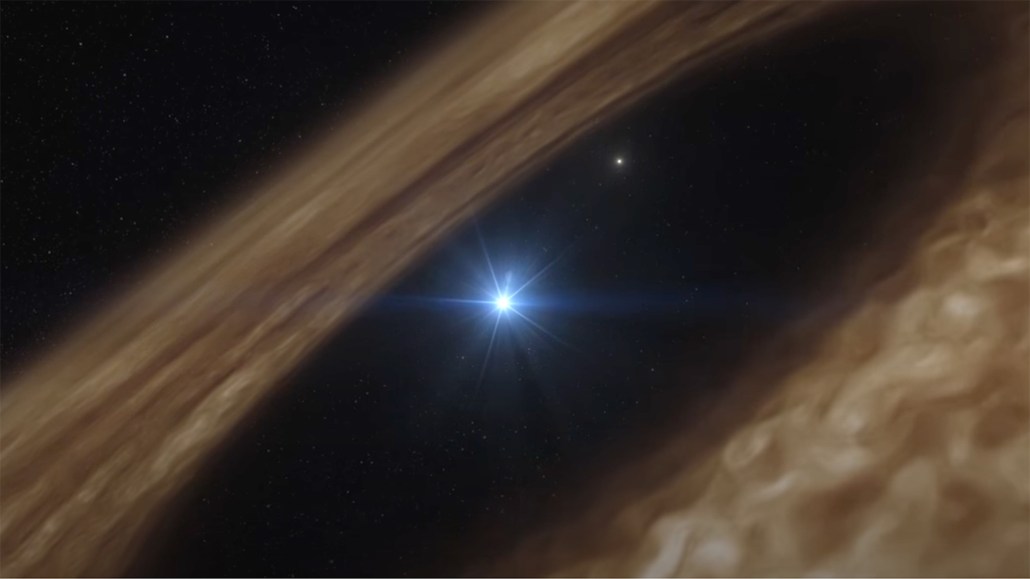
The planet-forming disk of gas and dust around a young star called HD 100546 (illustrated) appears to have inherited methanol from the interstellar cloud that formed the star.
L. Calçada/ESO

The planet-forming disk of gas and dust around a young star called HD 100546 (illustrated) appears to have inherited methanol from the interstellar cloud that formed the star.
L. Calçada/ESO